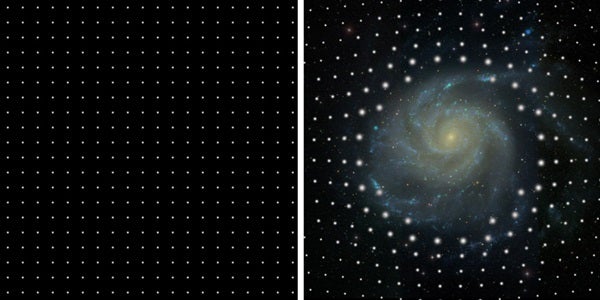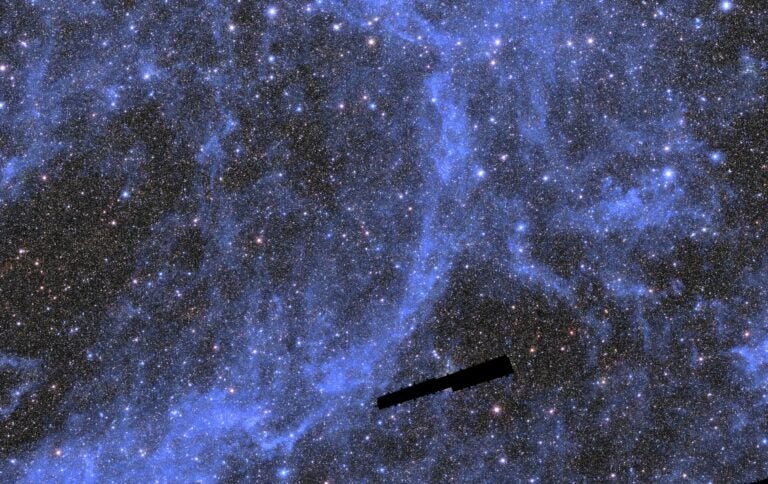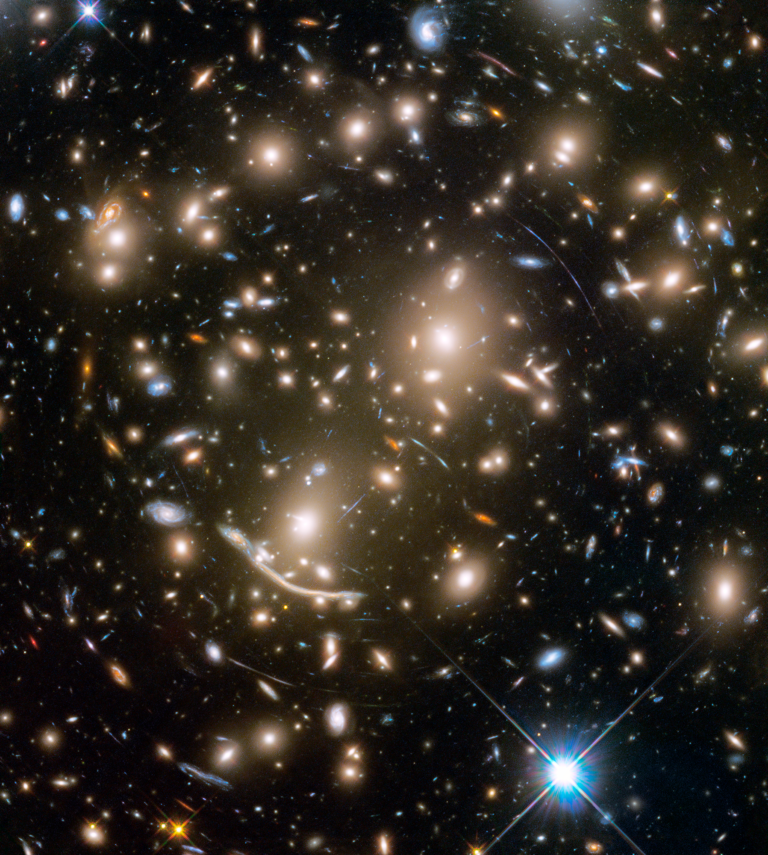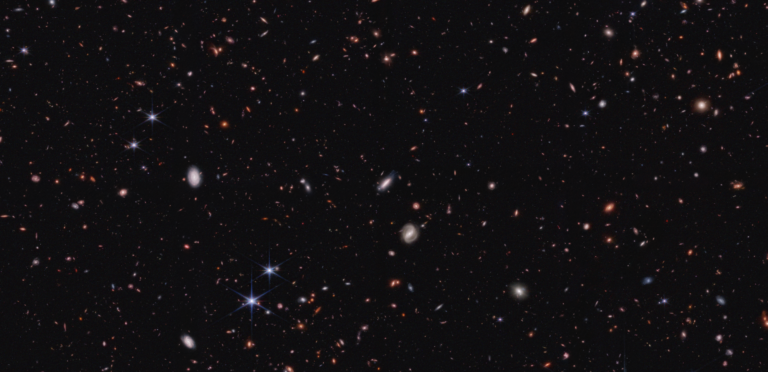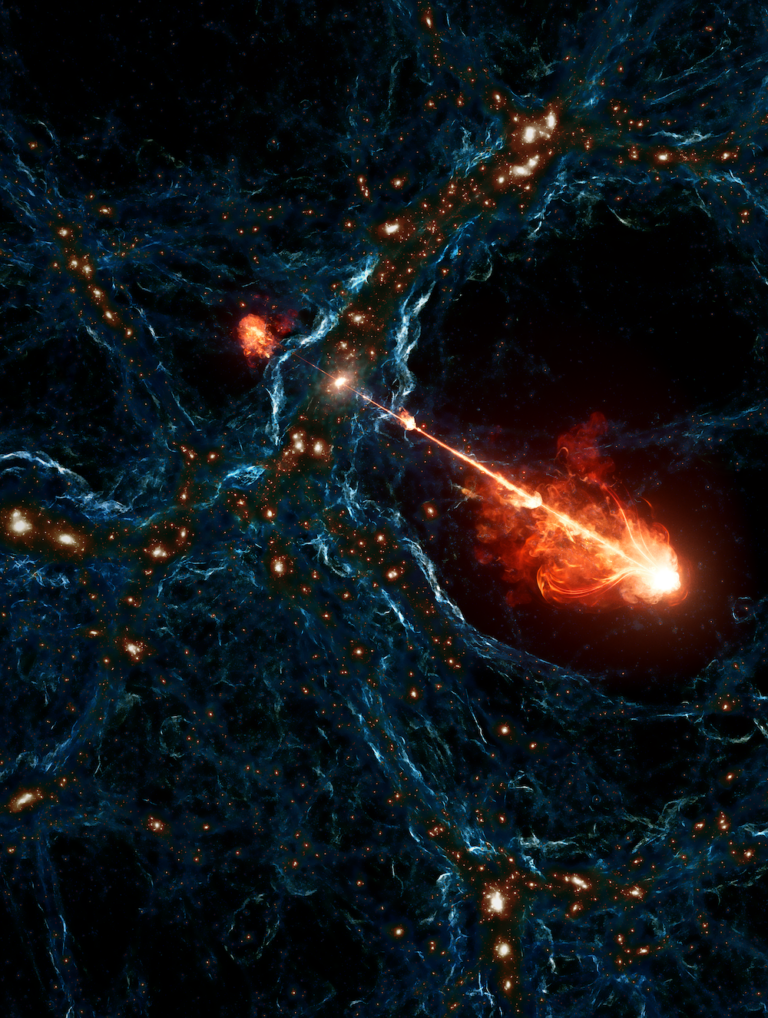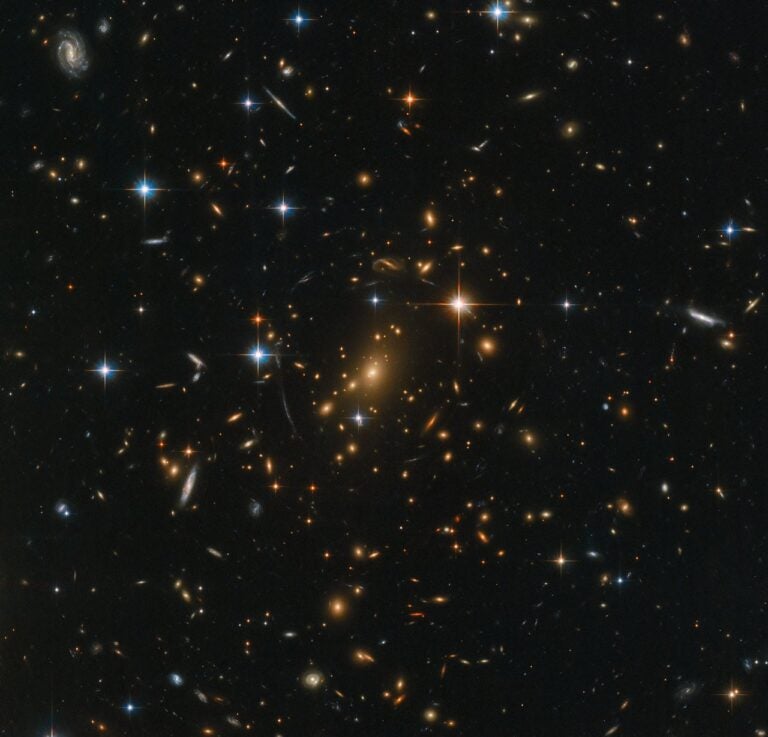The new research concludes that galaxies have no definite “edges.” Instead, galaxies have long outskirts of dark matter that extend to nearby galaxies, and intergalactic space is not empty but filled with dark matter.
It is well-known that there is a large amount of unseen matter called “dark matter” in the universe. It constitutes about 22 percent of the present-day universe while ordinary matter constitutes of only 4.5 percent. An important question still remains: Where is most of the dark matter in the universe?
Einstein’s general theory of relativity predicts that a light ray passing through a nearby massive object such as a galaxy is bent by the effect called “gravitational lensing.” For example, the effect causes the image of a distant galaxy to be deformed and brightened by an intervening galaxy. However, the effect itself is small and so cannot be easily detected for a single galaxy.
Only recently, images of millions of galaxies from the Sloan Digital Sky Survey (SDSS) made it possible to derive an averaged mass distribution around the galaxies. Earlier in 2010, an international research group led by Brice Menard then from University of Toronto, Canada, and Masataka Fukugita at IPMU used 24 million galaxy images from the SDSS and successfully detected the gravitational lensing effect caused by dark matter around the galaxies. From the result, they determined the projected matter density distribution over a distance of a 100 million light-years from the center of the galaxies.
Masataka Fukugita and Naoki Yoshida at IPMU, together with Shogo Masaki at Nagoya University, used large computer simulations of cosmic structure formation to unfold various contributions to the projected matter distribution. They showed that galaxies have extended to the outskirts of dark matter, well beyond the region where stars exist. The dark matter distribution is well organized but extended to intergalactic space, whereas luminous components such as stars are bound within a finite region.
More interestingly, the estimated total amount of dark matter in the outskirts of the galaxies explains the gap between the global cosmic mass density and that derived from galaxy number counting weighted by their masses. A long-standing mystery on where the missing dark matter is is now solved by the research. There is no empty space in the universe. Intergalactic space is filled with dark matter.

